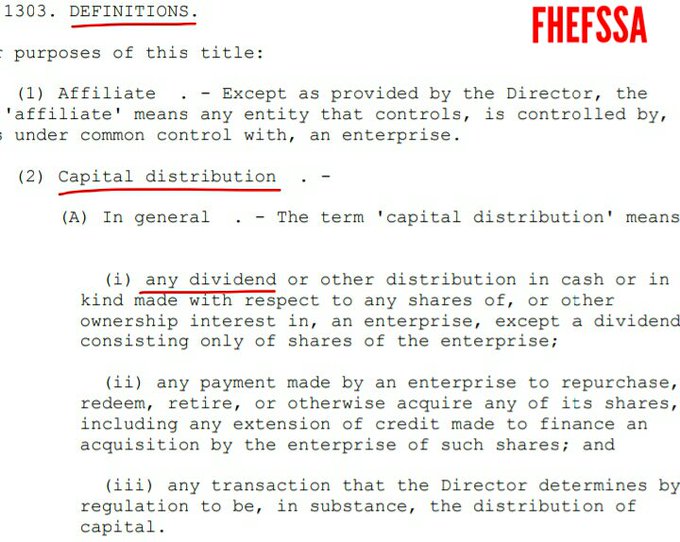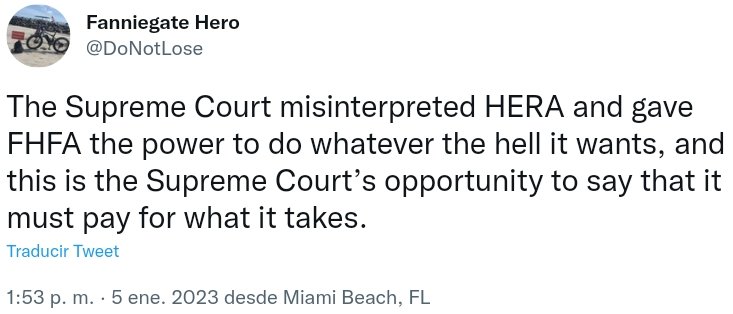Replies to post #765124 on Fannie Mae-No Politics (FNMA)
08/24/23 11:09 PM
08/24/23 11:19 PM




(c) This section is intended to supplement and shall not replace or affect any other restriction on capital distributions imposed by statute or regulation.
except to the extent the Director determines is in the interest of the conservatorship.





| Volume | |
| Day Range: | |
| Bid Price | |
| Ask Price | |
| Last Trade Time: |